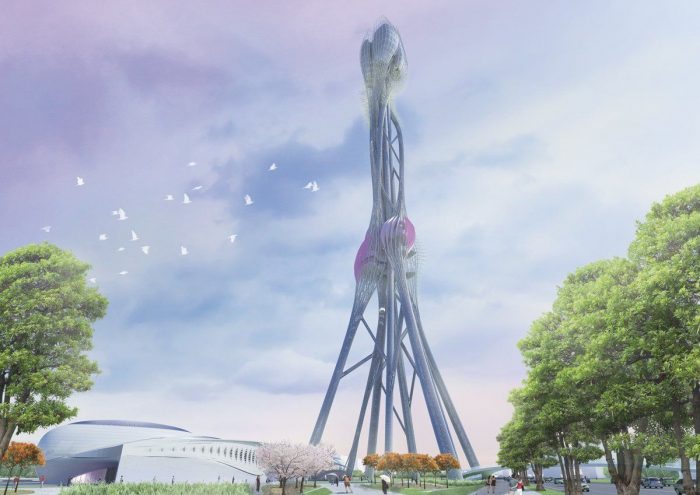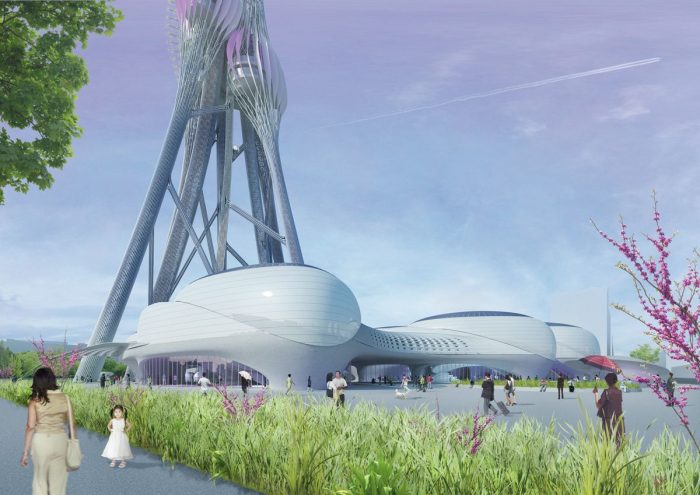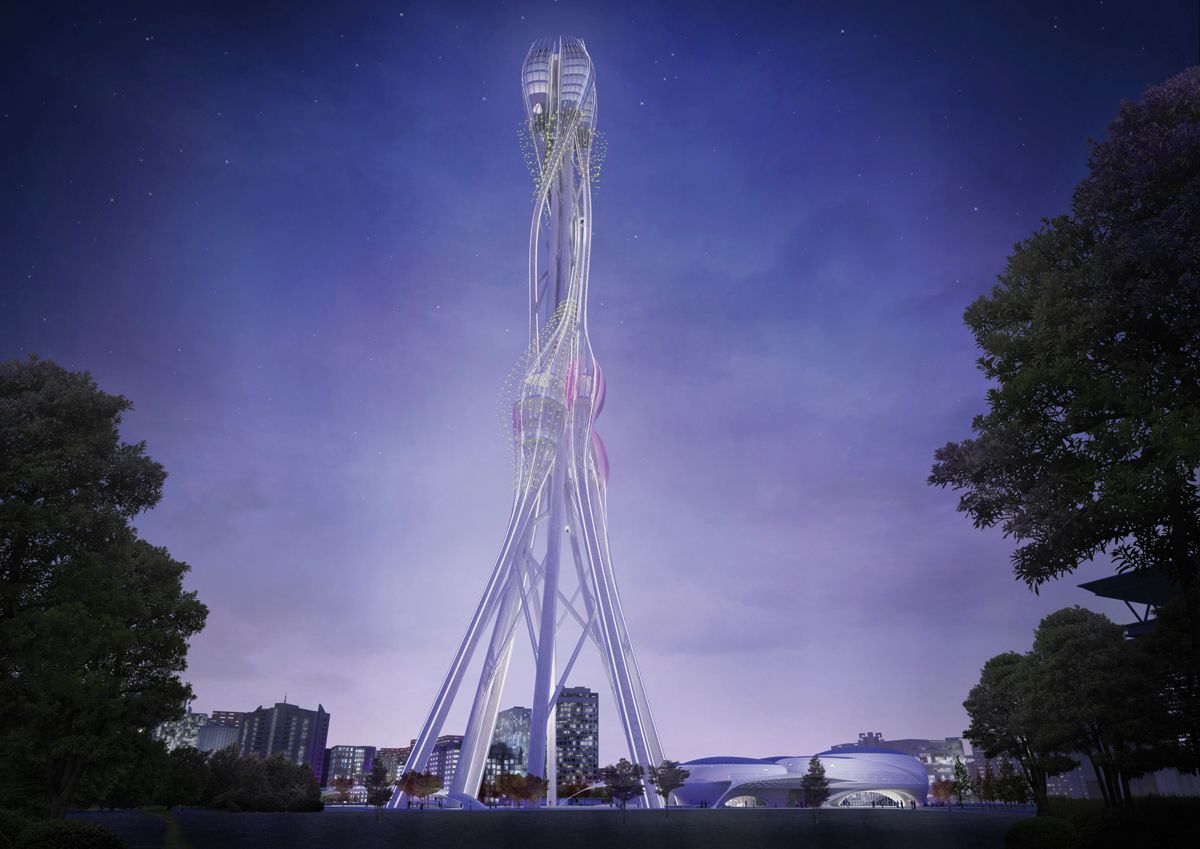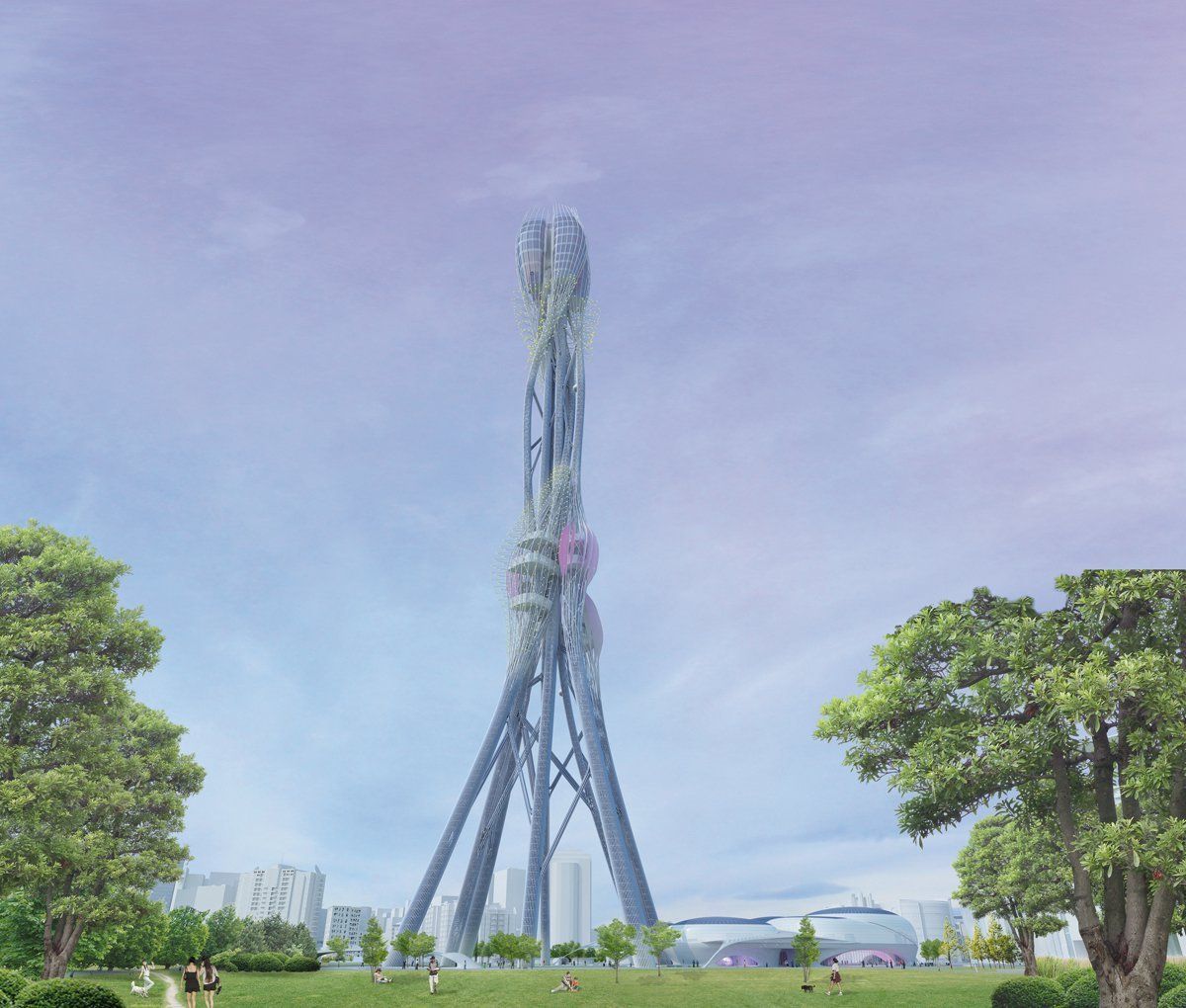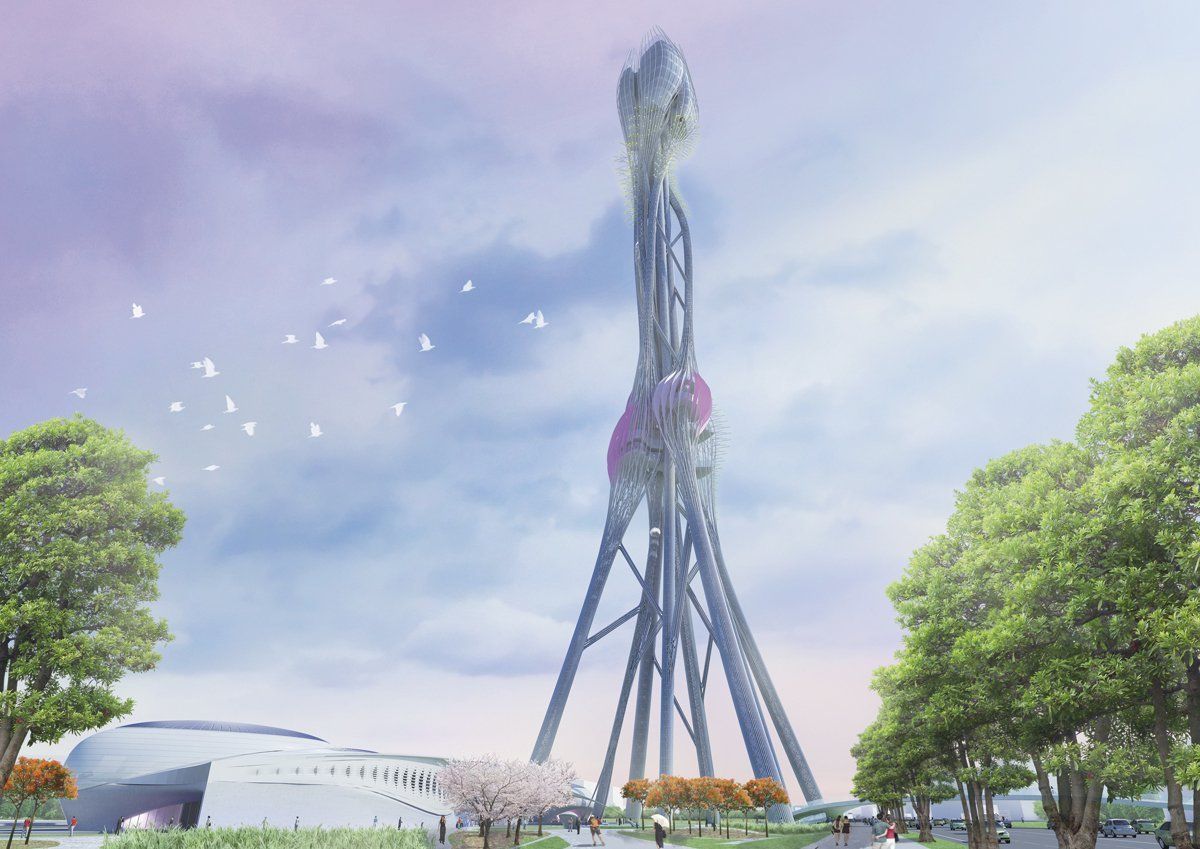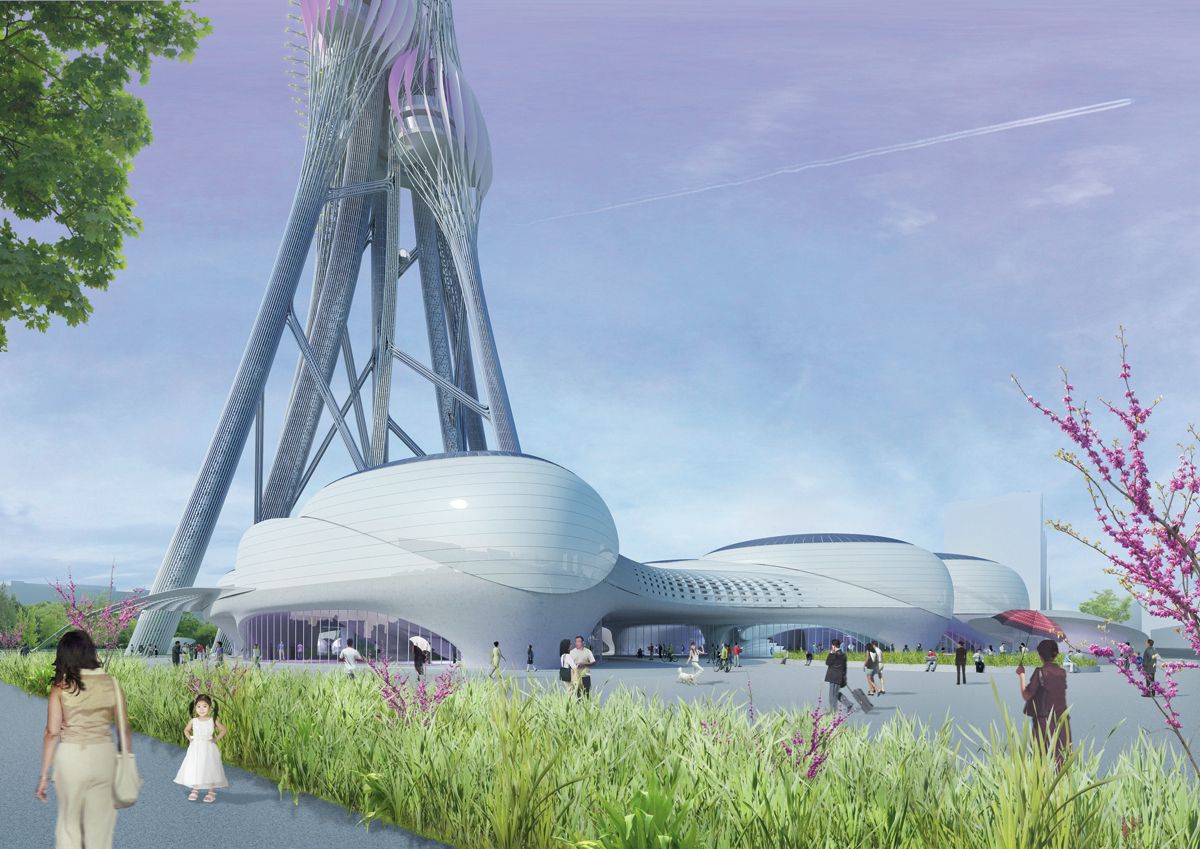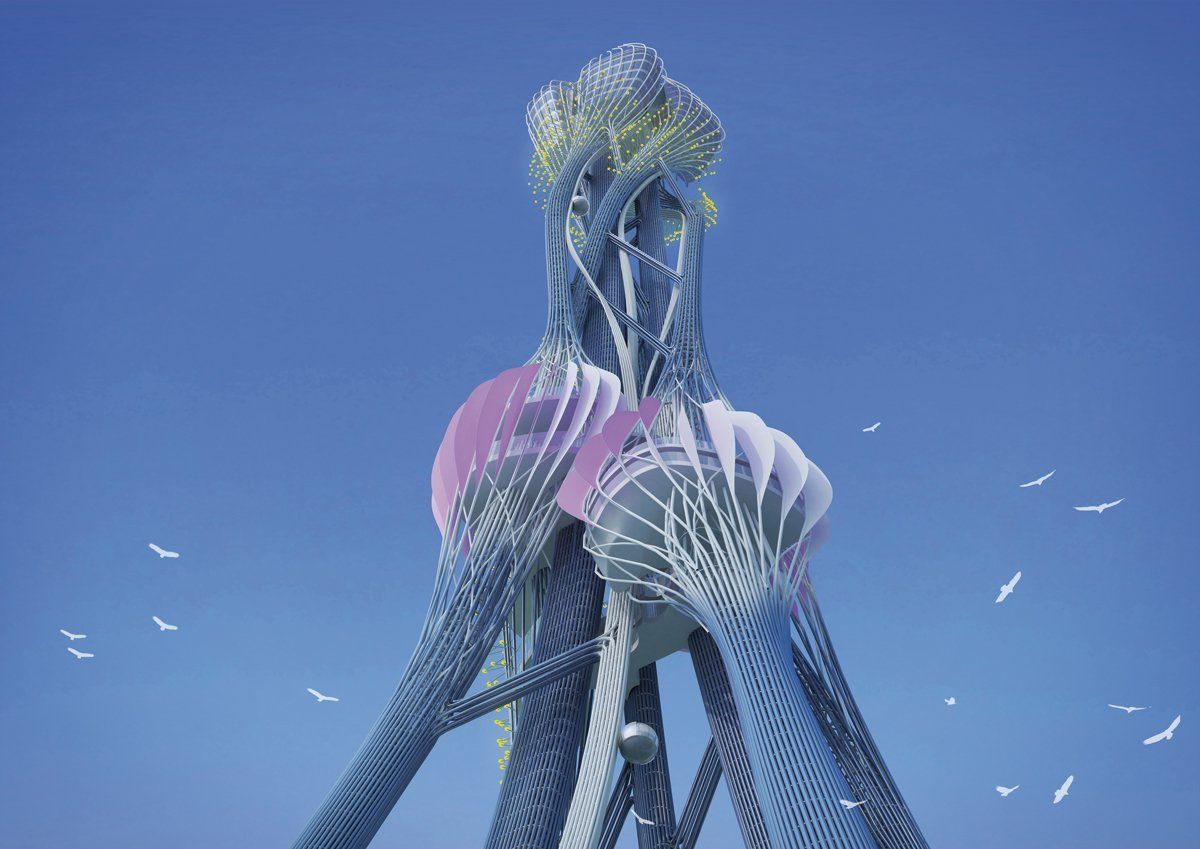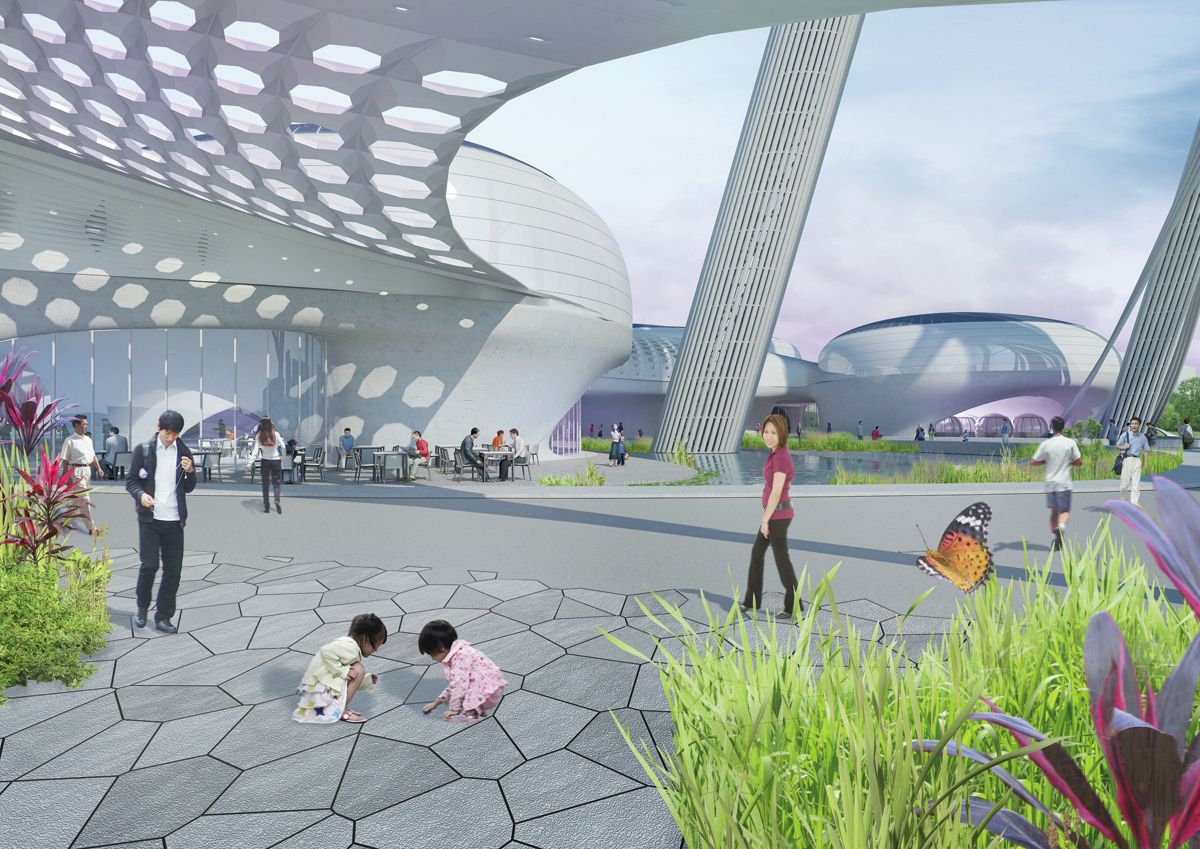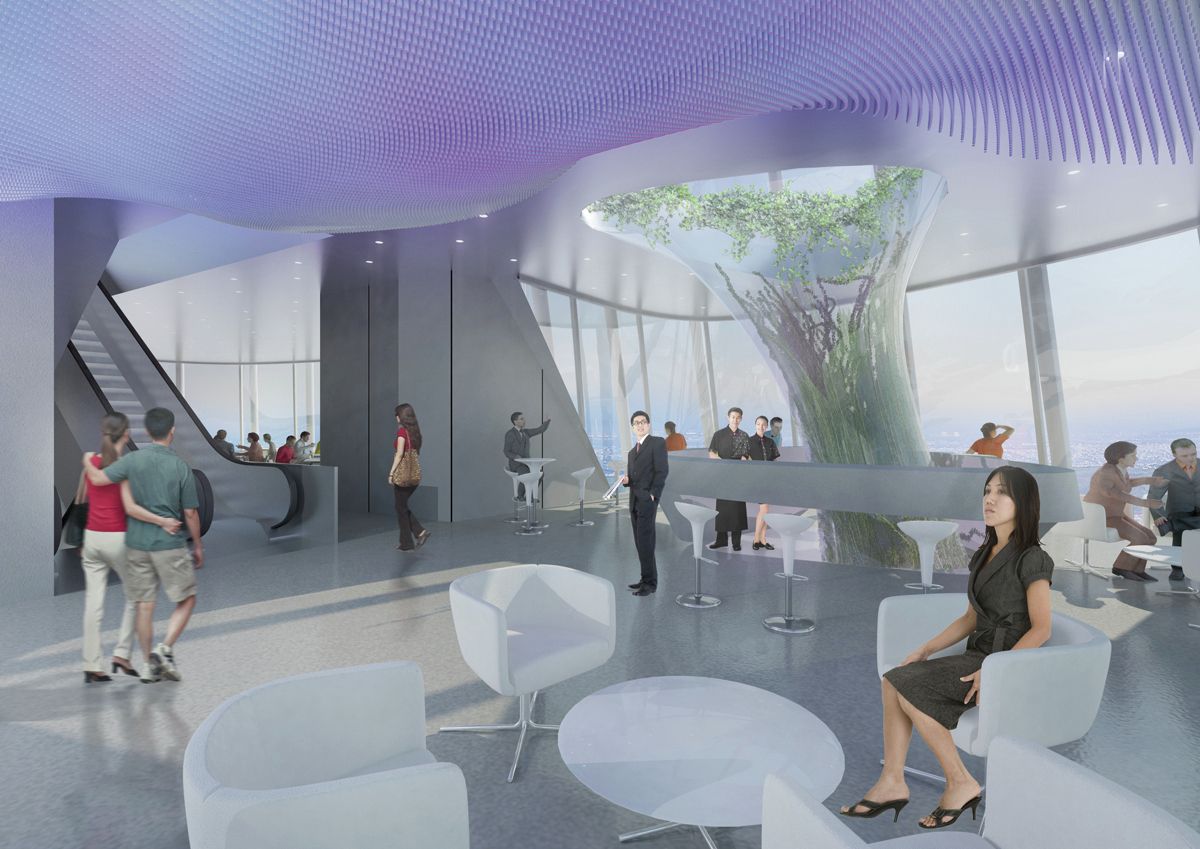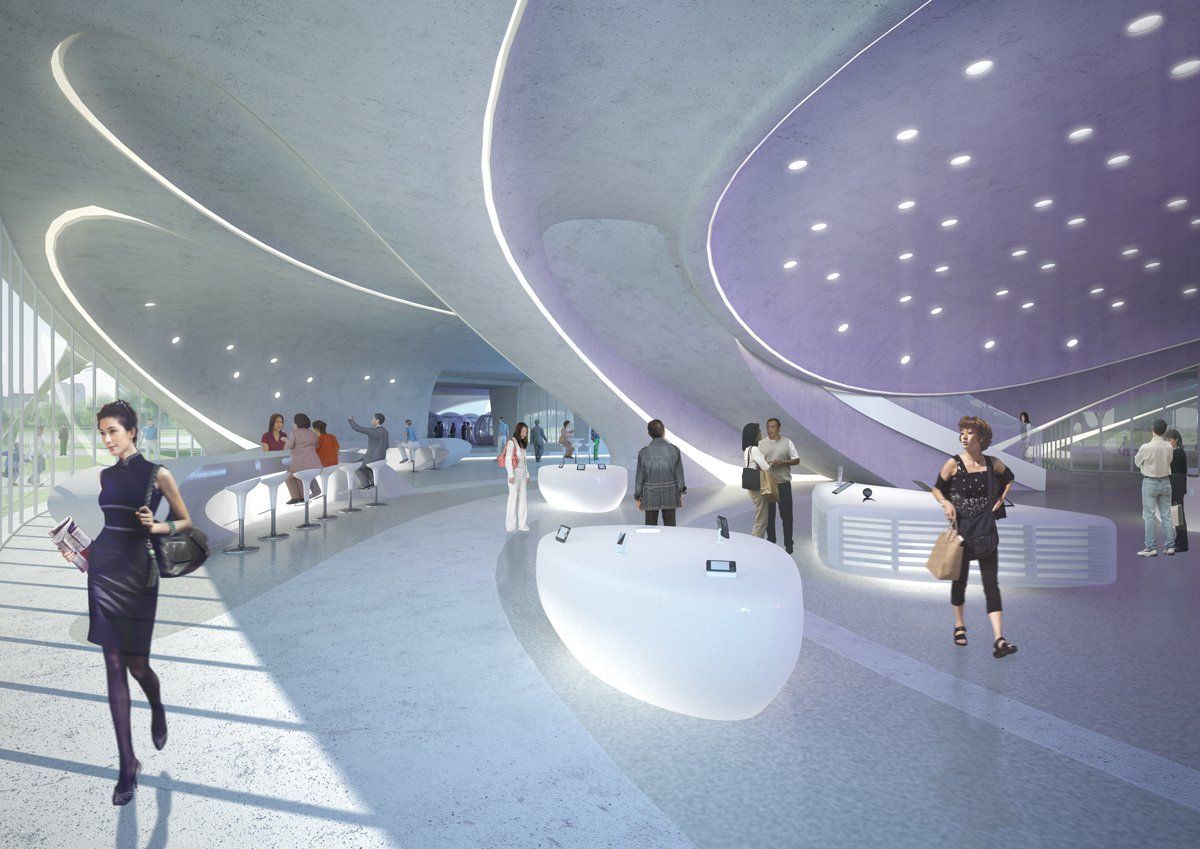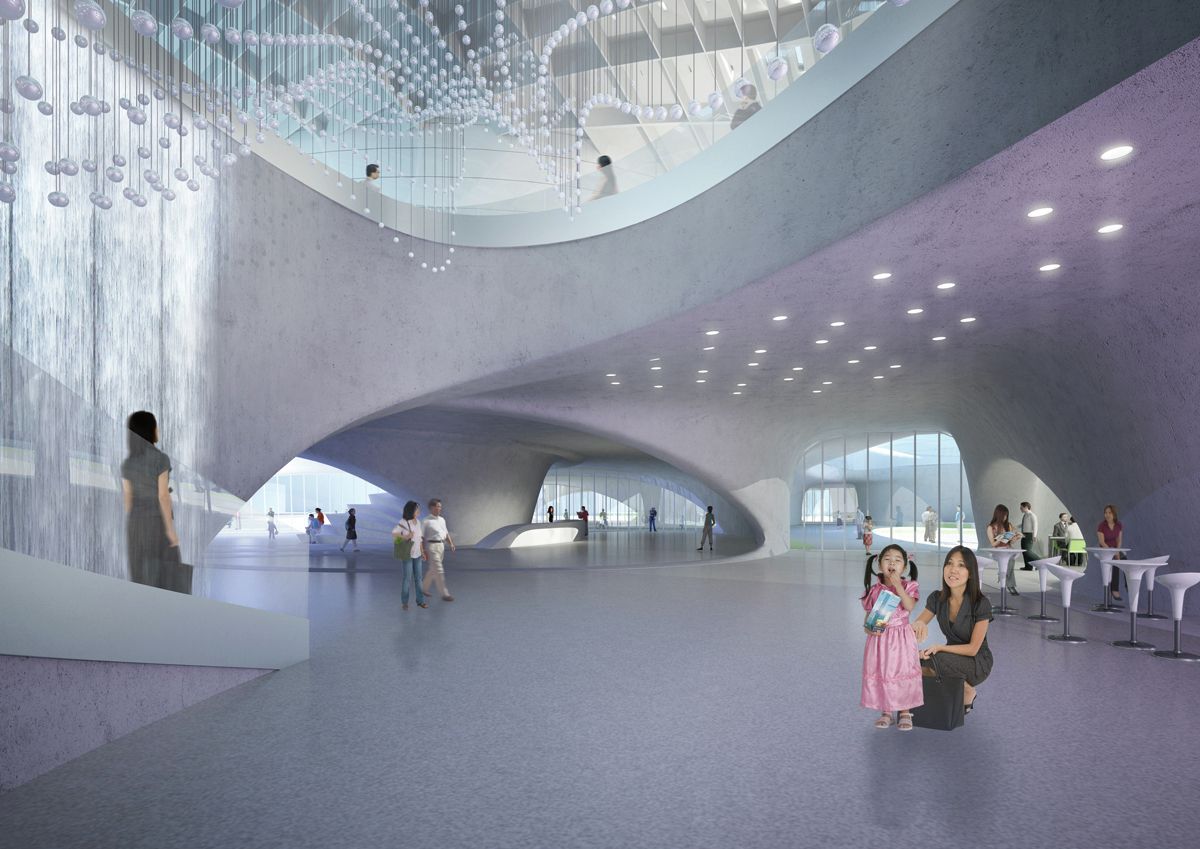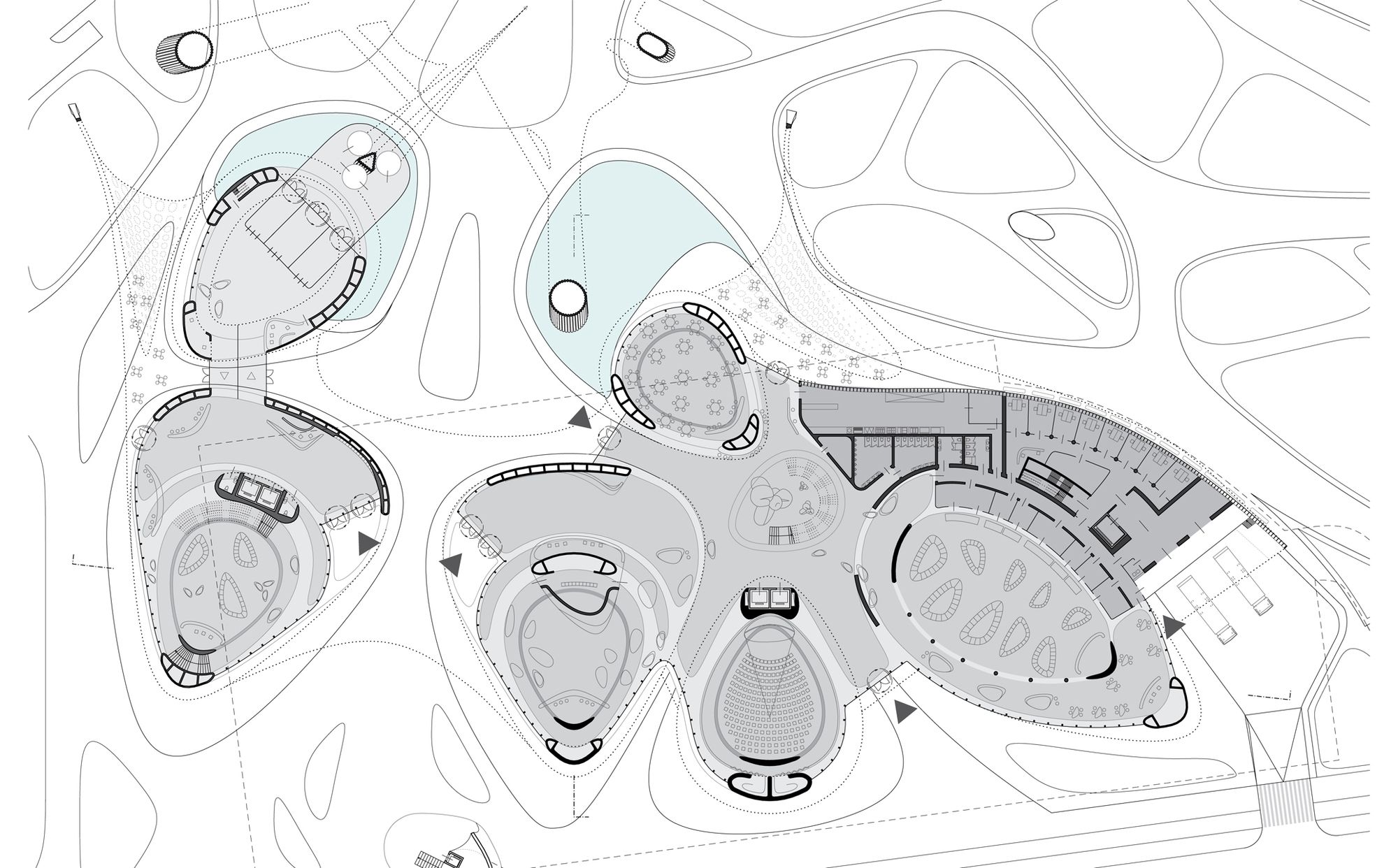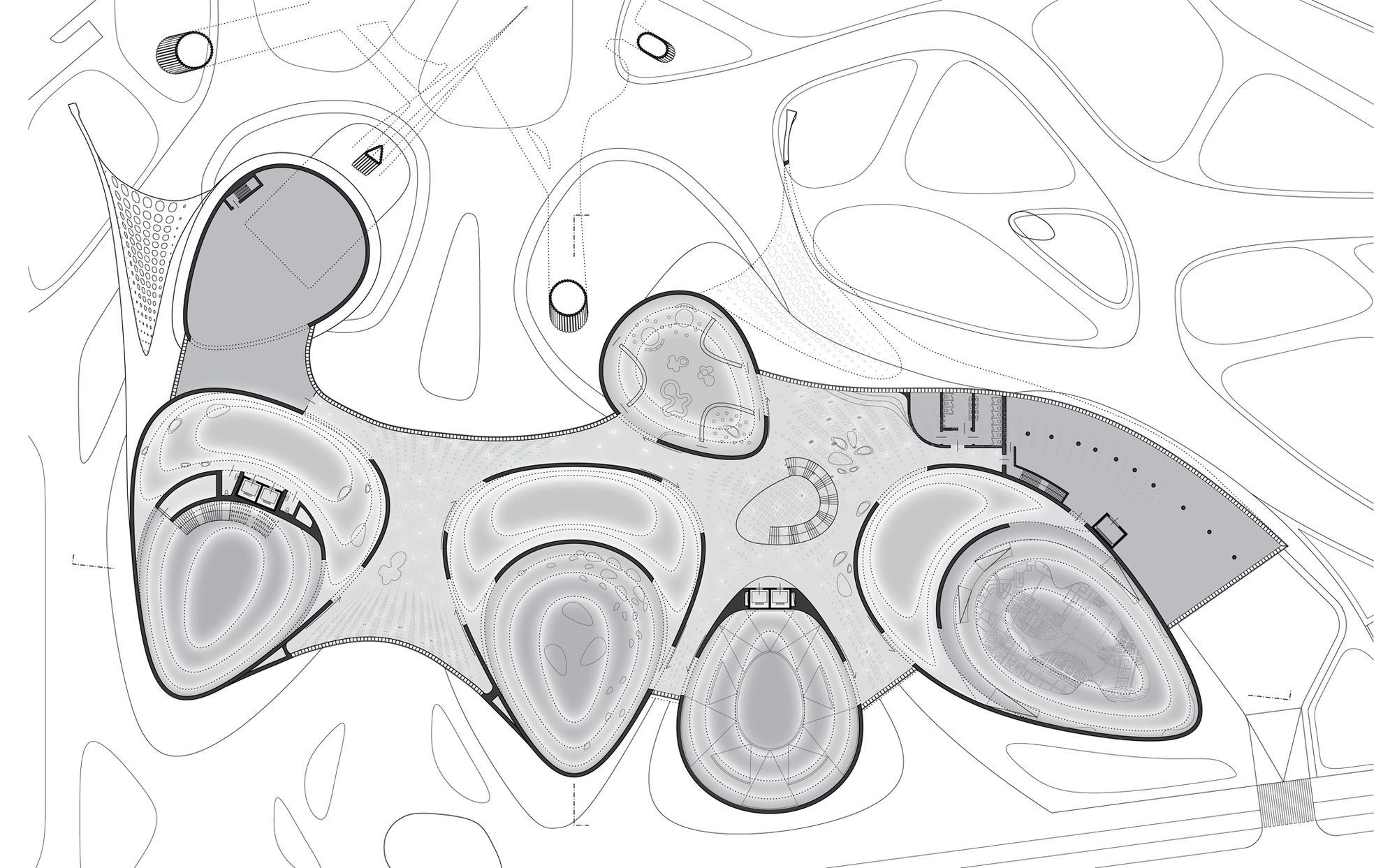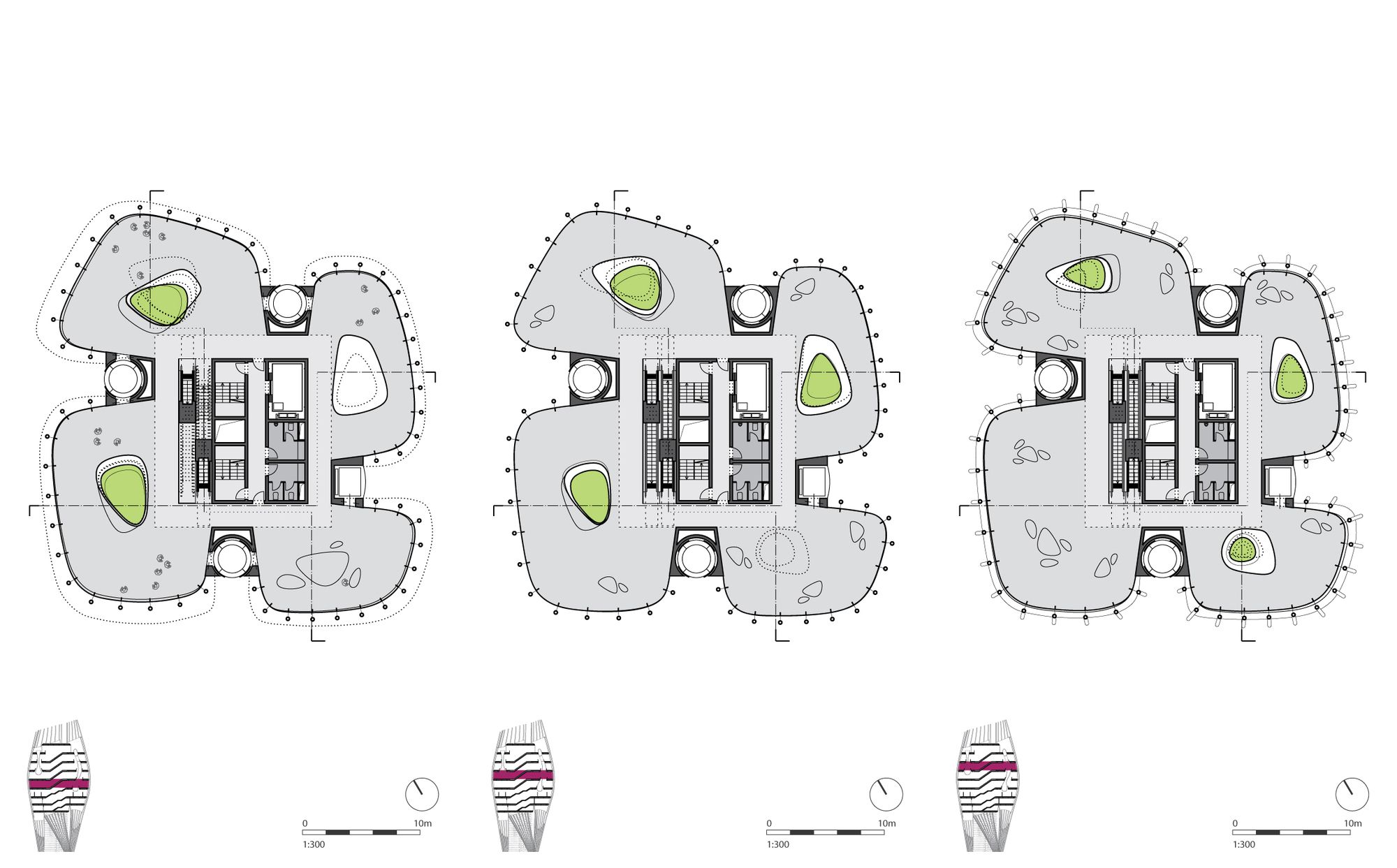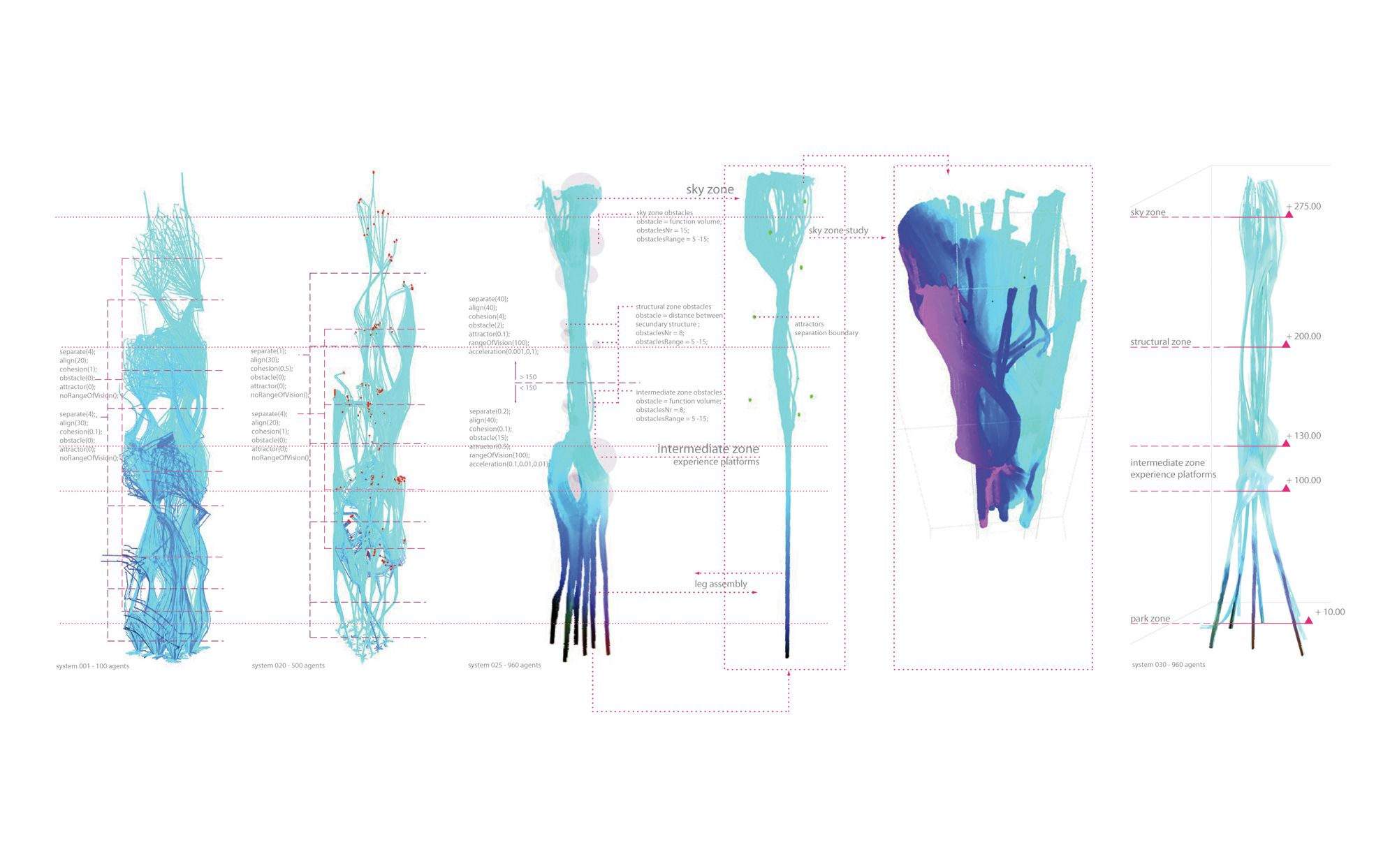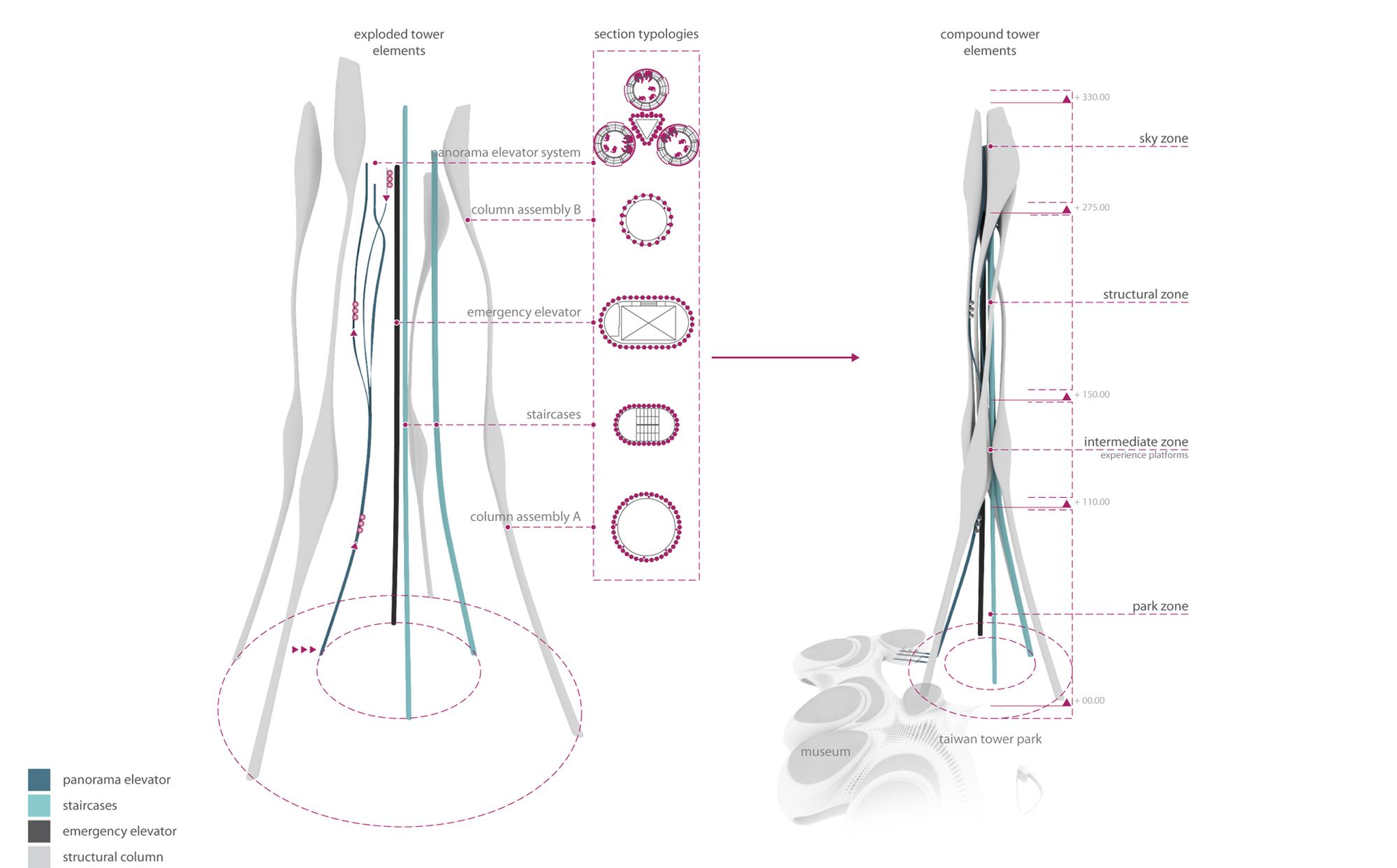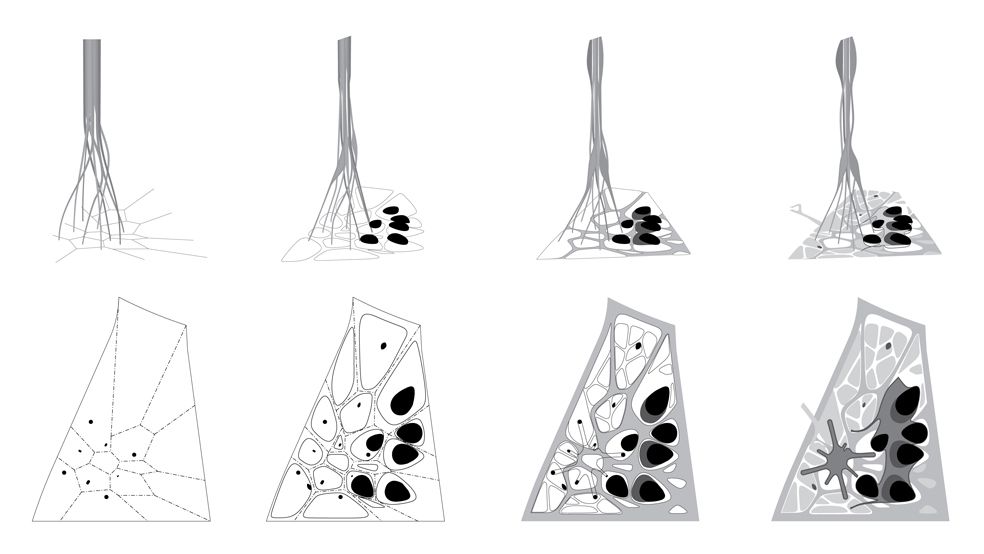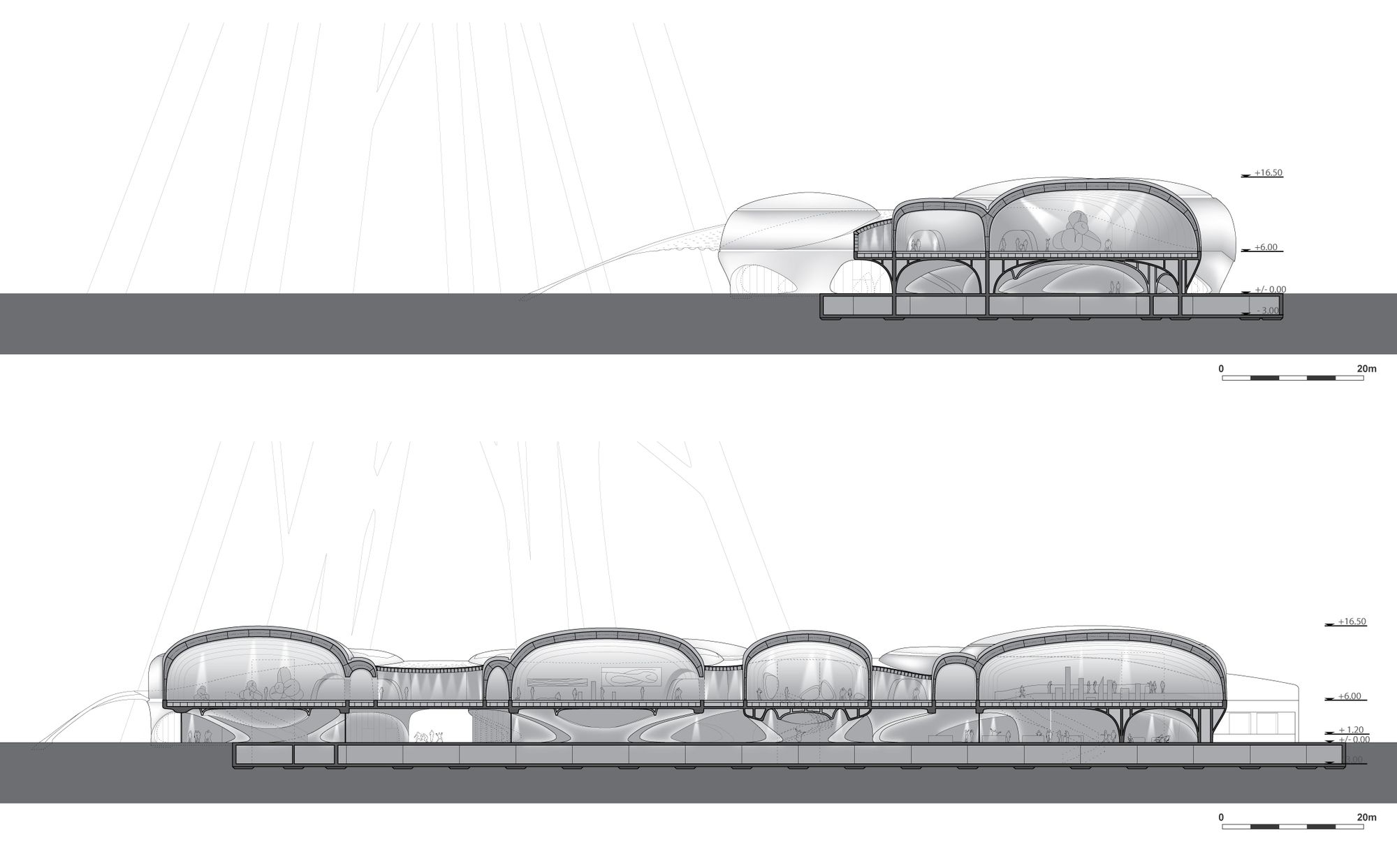It’s been a long time since we had an Eiffel Tower, hasn’t it? After the first, a sound and stunning structural work, towers became solid, singular pieces. What was it that brought this about? Is it about solidarity? Reassurance? Power? One thing is patently true- nature doesn’t do things this way; the singular object does not exist in the natural world. So when the Austrian architecture firm SOMA proposed a fibrous, multi-legged tower for the Taiwan Tower Conceptual Design International Competition, it was only surprising in the fact that it hasn’t been done more.
The firm derived their final scheme after analyzing more than 2.5 million possible solutions and zeroing in on the most efficient, stable and aesthetic. Diagonal members tie the eight tower-like legs together, lending stability to the structure. This necessary move does not detract from the organic appearance of the tower. Indeed, it only strengthens the resemblance it shares to organic fibers such as muscle and tendon. SOMA’s submission, which won runner-up in the competition, is planned as a zero-carbon emission tower with PV cells not only located on the roof, but over 25,000 m² of flexible PV cells coating the vertical surfaces of the tower.Eventually there will be another Eiffel Tower. I would surmise that the next time around, the product will bear more resemblance to SOMA’s design than the novelty of Gustave Eiffel.
Courtesy of soma
Courtesy of soma
Courtesy of soma
Courtesy of soma
Courtesy of soma
Courtesy of soma
Courtesy of soma
Courtesy of soma
Courtesy of soma
Plan 01 - Courtesy of soma
Plan 02 - Courtesy of soma
Plan Diagram - Courtesy of soma
Diagram - Courtesy of soma
Diagram - Courtesy of soma
Diagram - Courtesy of soma
Sections - Courtesy of soma
Courtesy of SOMA


